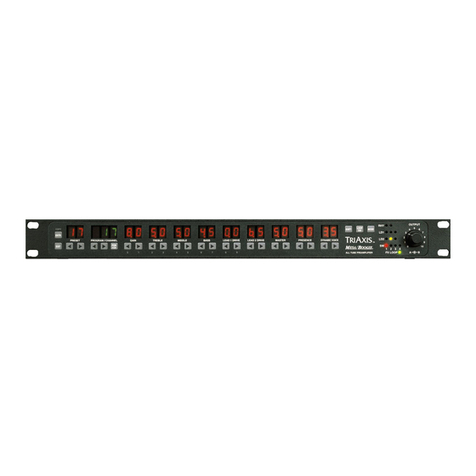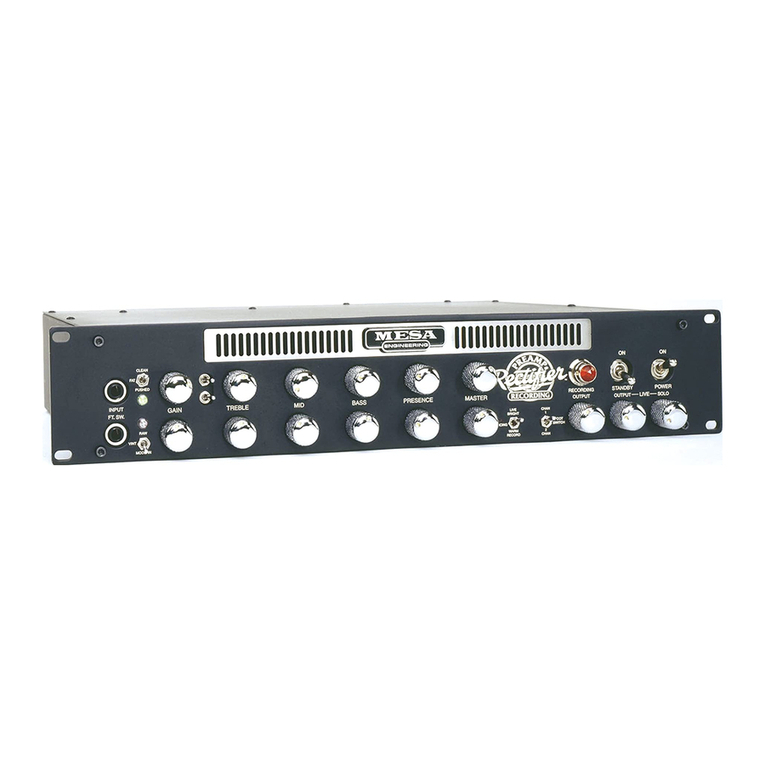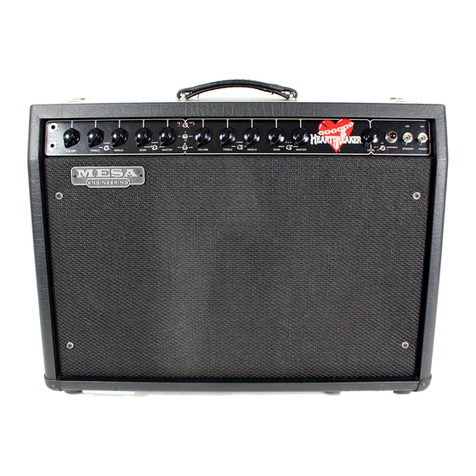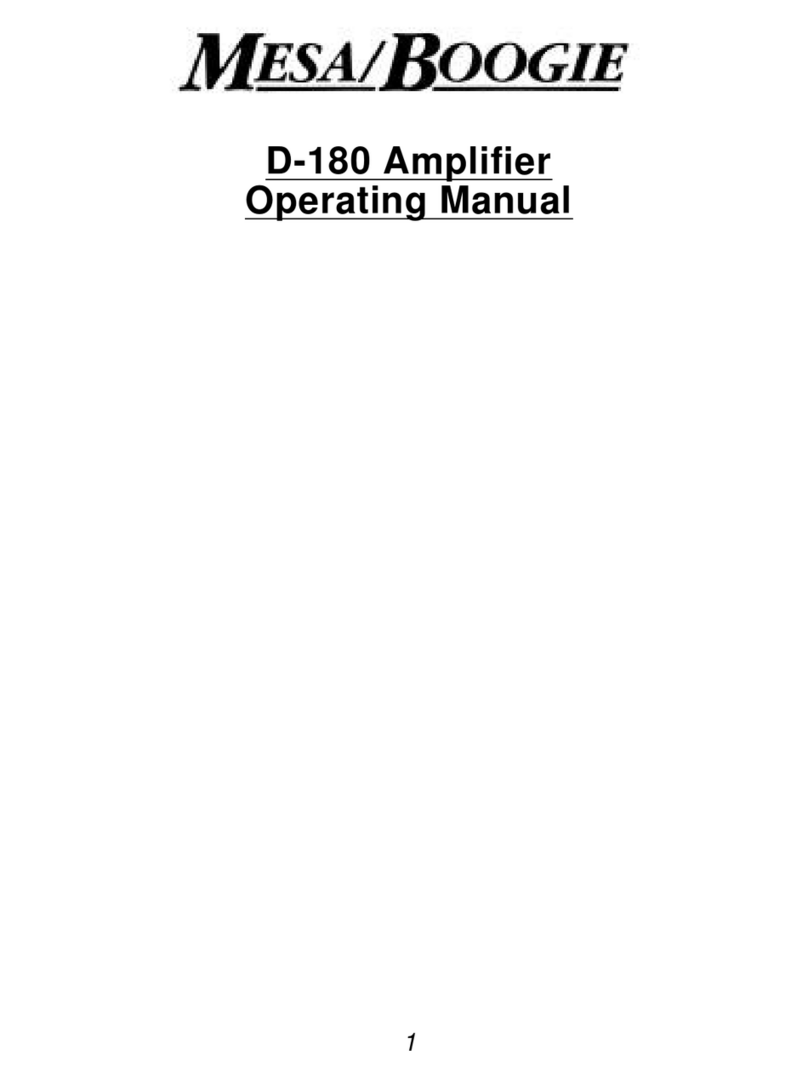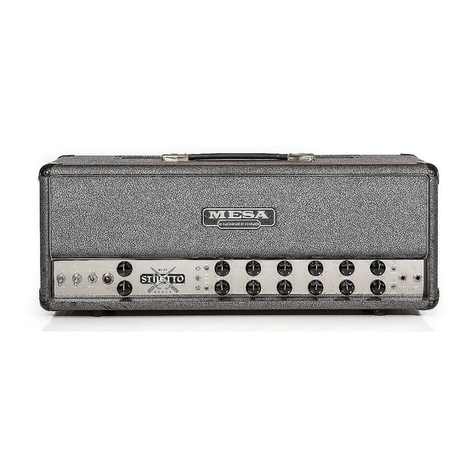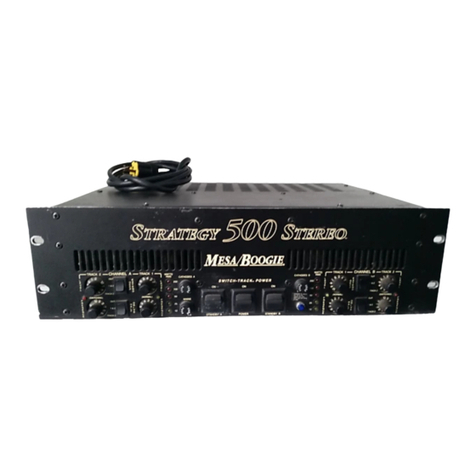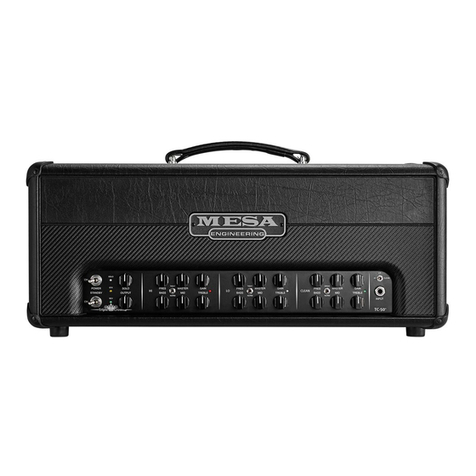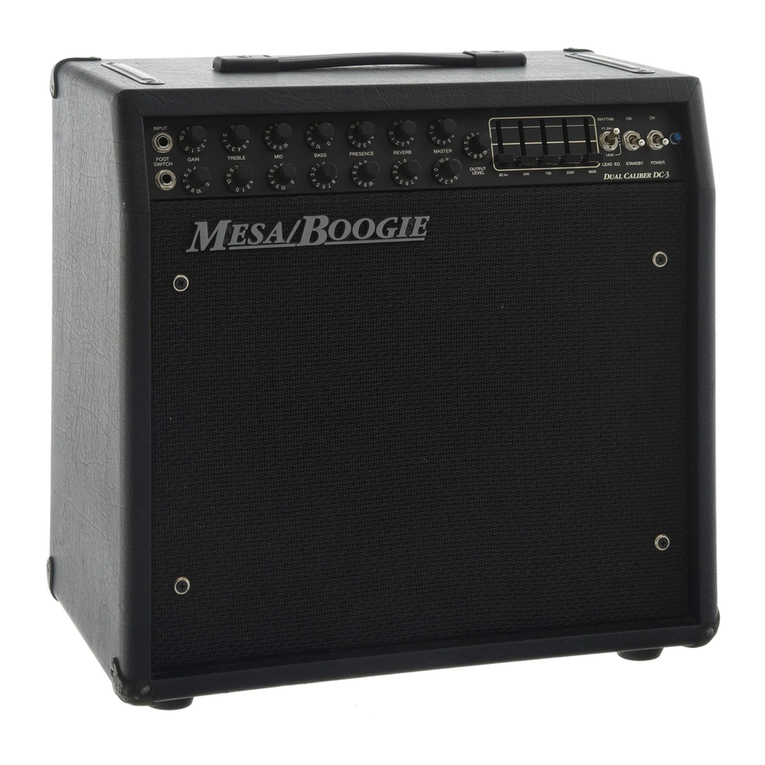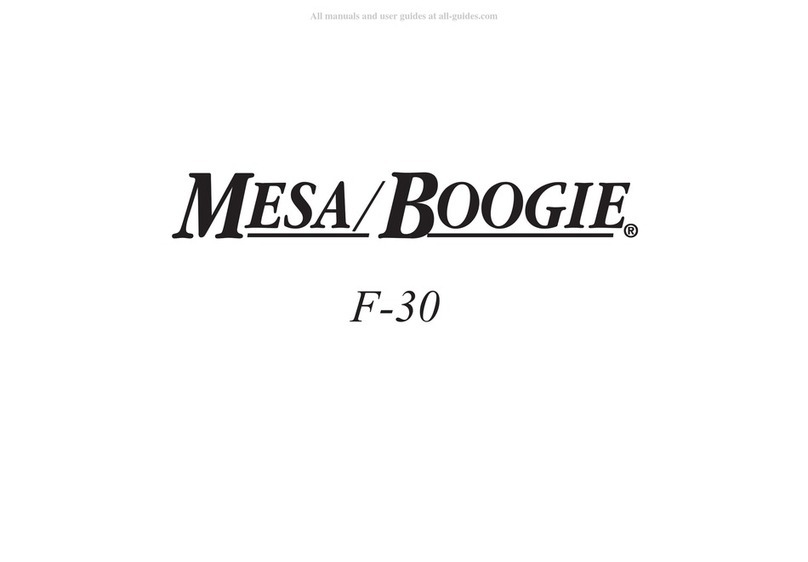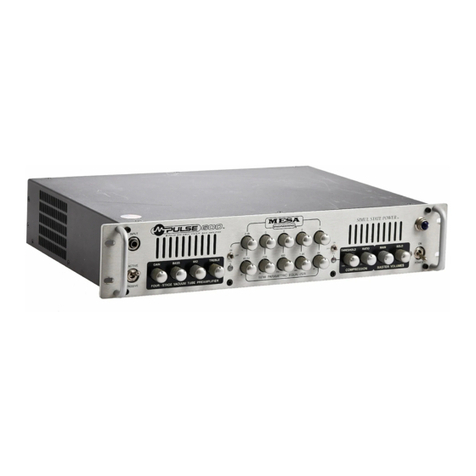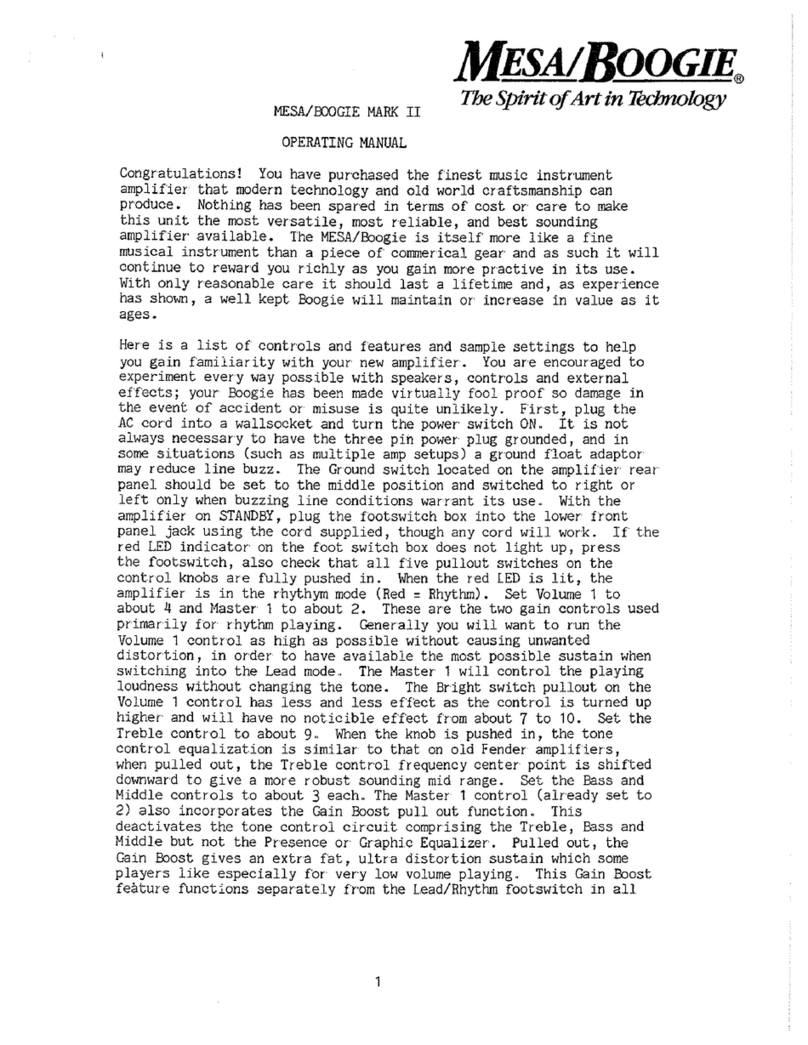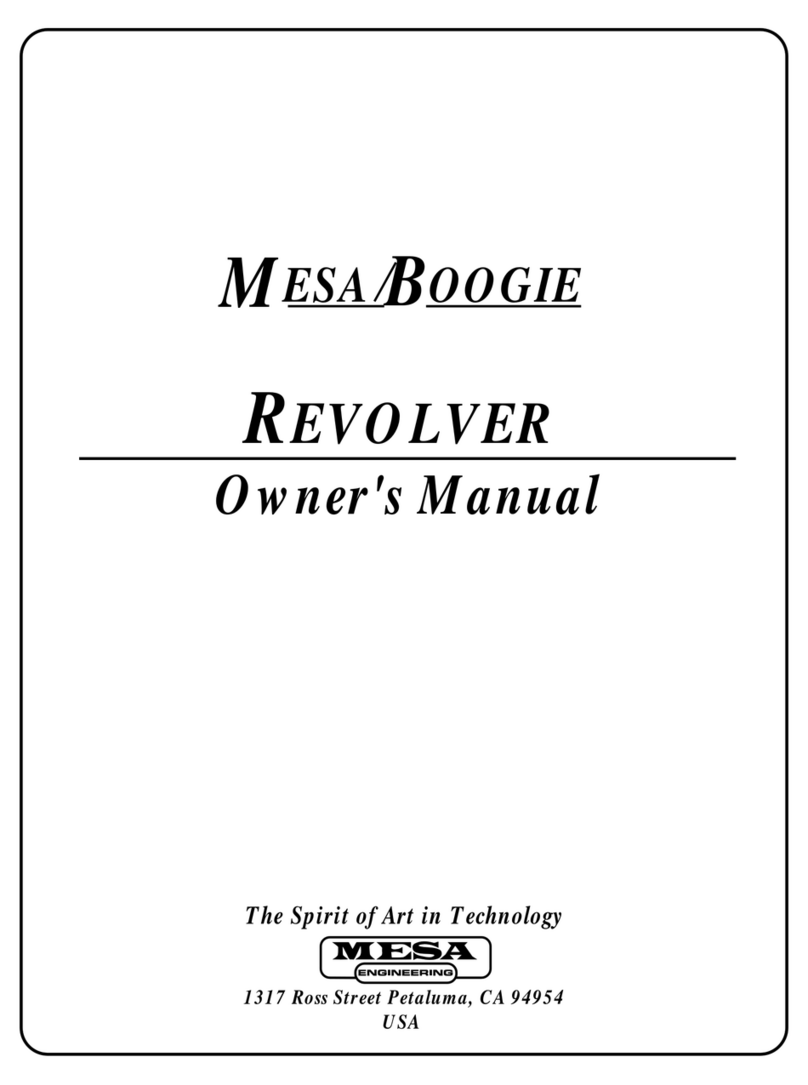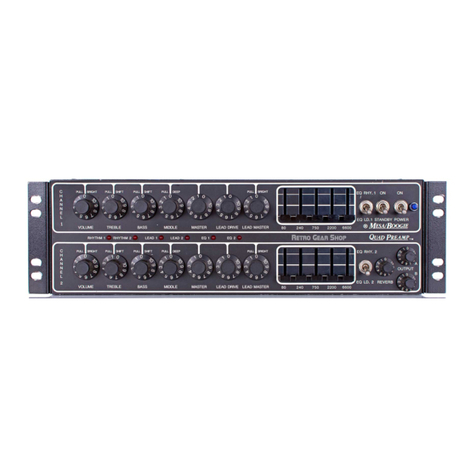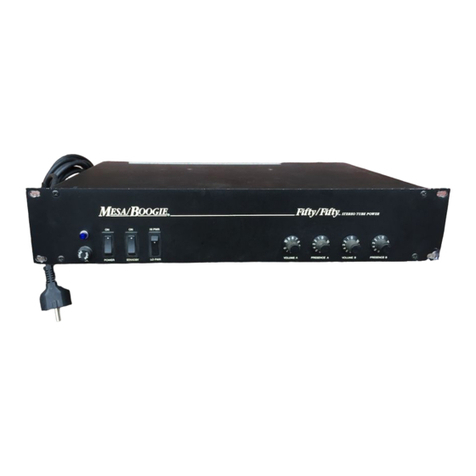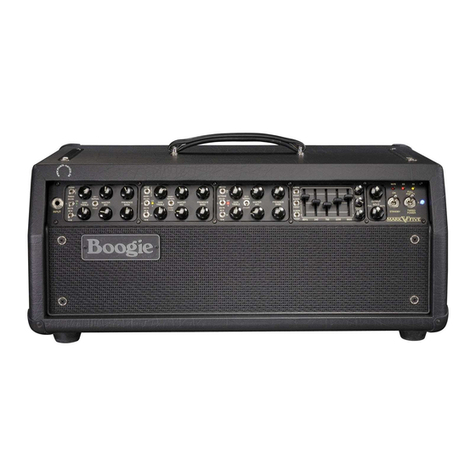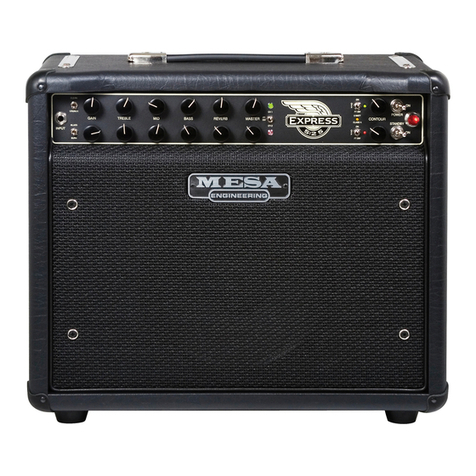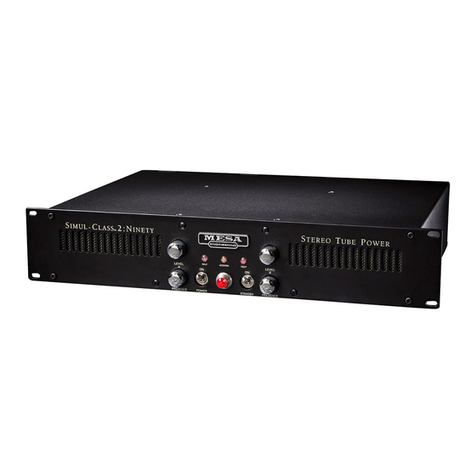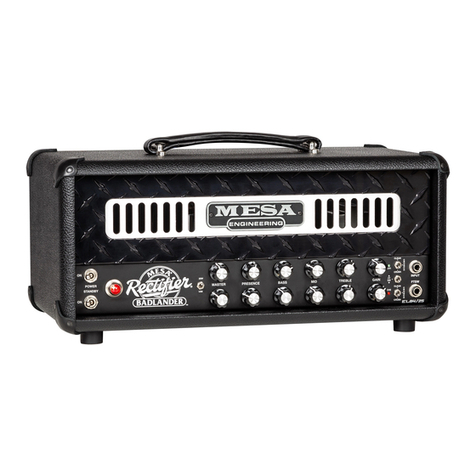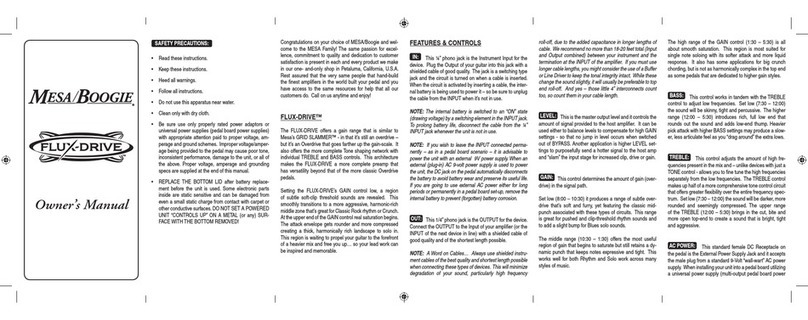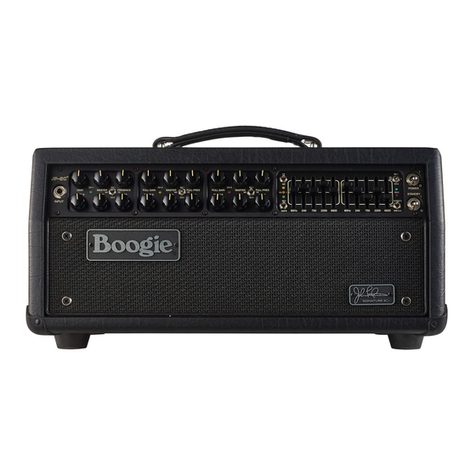
inducing hum into the signal carrying pair of conductors. Now, the one thing that complicates this is that at very high (radio) frequen-
cies, ground is not “really” ground, so additional techniques are incorporated within this network that allows 2 functional grounding
spectrums within the same network, providing added RFI (radio frequency interference) rejection. The general rule is to start with pin
1 lifted, and if there is noise, then try connecting it. It should also be noted that there are a lot of other possible causes for noise; this
switch is a solution for ground loop noise between the preamp and the power amp.
PREAMP OUT ¼” (6.3mm) JACK)
This output jack is unbalanced and can deliver a +4dBu (line level) with a maximum output
level of about +6dBu with high MASTER VOLUME settings. This unbalanced, post-tone control Output is optimized for connections
to MI amplifier ‘Power Amp In’ or FX loop RETURN jacks (bypassing the amp’s preamp and EQ), and is also suitable for connection
to MI amplifier Inputs. Combined with the XLR PREAMP OUTPUTS and the 1/4” THRU, the SUBWAY DI-PREAMP can become a
‘tonal command center’ for additional amplifier/power/cabinet setups in multi-amp or bi-amp rigs. While this output is phantom power
protected, it is unlikely that phantom power is ever encountered on a ¼” (6.3mm) input as this violates industry standards.
DIRECT OUT XLR JACK
This output jack is fully balanced and delivers a -30dBu (microphone level) with a maximum output
level of about -10dBu. This studio quality DIRECT OUT has been meticulously designed for optimum low noise and offers the renowned
and player-tested and approved SUBWAY Preamp tone and from the D-800 in the compact format. While many D.I. OUTPUTS from
products over the years cause Front of House, monitor and studio engineers to frown when a bassists suggests that their D.I. sounds
great and isn’t noisy, with the SUBWAY BASS DI PREAMP DIRECT OUT, you can confidently insist they try it and watch them smile
as they raise your levels into the mix for the first time. Put your favorite or newfound engineers to the ‘SUBWAY D.I. Challenge’ and
let us know how frequently you’ll hear, “that’s one of the best D.I.s I’ve ever heard.”. It is also fully phantom power protected, in the
event of accidental connection to an input that has phantom power present.
DIRECT OUT GROUND LIFT SWITCH
This switch connects or lifts the circuit ground/earth/common connection from pin
1 on the XLR DIRECT OUT connector only. Balanced outputs do not rely on the pin 1 or shield connection to transmit signal to the
audio console. While pin 1 is always connected to console’s ground bus, often (due to differences in potential of a building’s ground/
earth system) currents will flow between grounds if there is a common connection, resulting in hum. By lifting the ground at the sending
(preamp) end, this allows the shielding to remain in place while breaking the ground current flow that is the cause for inducing hum
into the signal carrying pair of conductors. Now, the one thing that complicates this is that at very high (radio) frequencies, ground is
not “really” ground, so additional techniques are incorporated within this network that allows 2 functional grounding spectrums within
the same network, providing added RFI (radio frequency interference) rejection. The general rule is to start with pin 1 lifted, and if
there is noise; then try connecting it. It should also be noted that there are a lot of other possible causes for noise, this switch is a
solution for ground loop noise between the preamp and the console.
DI OUT SOURCE SWITCH
This switch selects the signal source routing that is used to derive the DIRECT OUTPUT signal.
In the PRE position, the signal is sourced directly from the input buffer (pre gain control) and the ACTIVE/PASSIVE switch sets the
basic operating gain to provide a more uniform signal level to the DI OUTPUT signal. In the POST position, the signal is sourced
from the output of the 4 band equalizer and before the MASTER VOLUME control. For PA use, the FOH (Front of House) engineer
will probably prefer a PRE EQ send because the capability of his PA system may be significantly different than the stage rig. The EQ
you use to sound good on stage may not work on a bigger system and in a larger acoustic space than just the stage. It’s excellent
courtesy to let your FOH or Monitor engineers know you are set to PRE when encouraging them to consider using your D.I. (and
suggesting they will love it’s studio quality, low noise, etc.). This also a great way to make friends with the engineers who will then
make your gig sound excellent in both your monitors and in the venue mix! For recording, depending on the tracking goals of the
engineer, PRE or POST might be used. Or, as mentioned previously, both signals may be captured, blended and/or isolated in addi-
tion to other sources like mic’s on amps, which the SUBWAY BASS D.I. PREAMP is likely also providing the signal. A true swiss-army
knife of connectivity and tone!
PAGE 5
